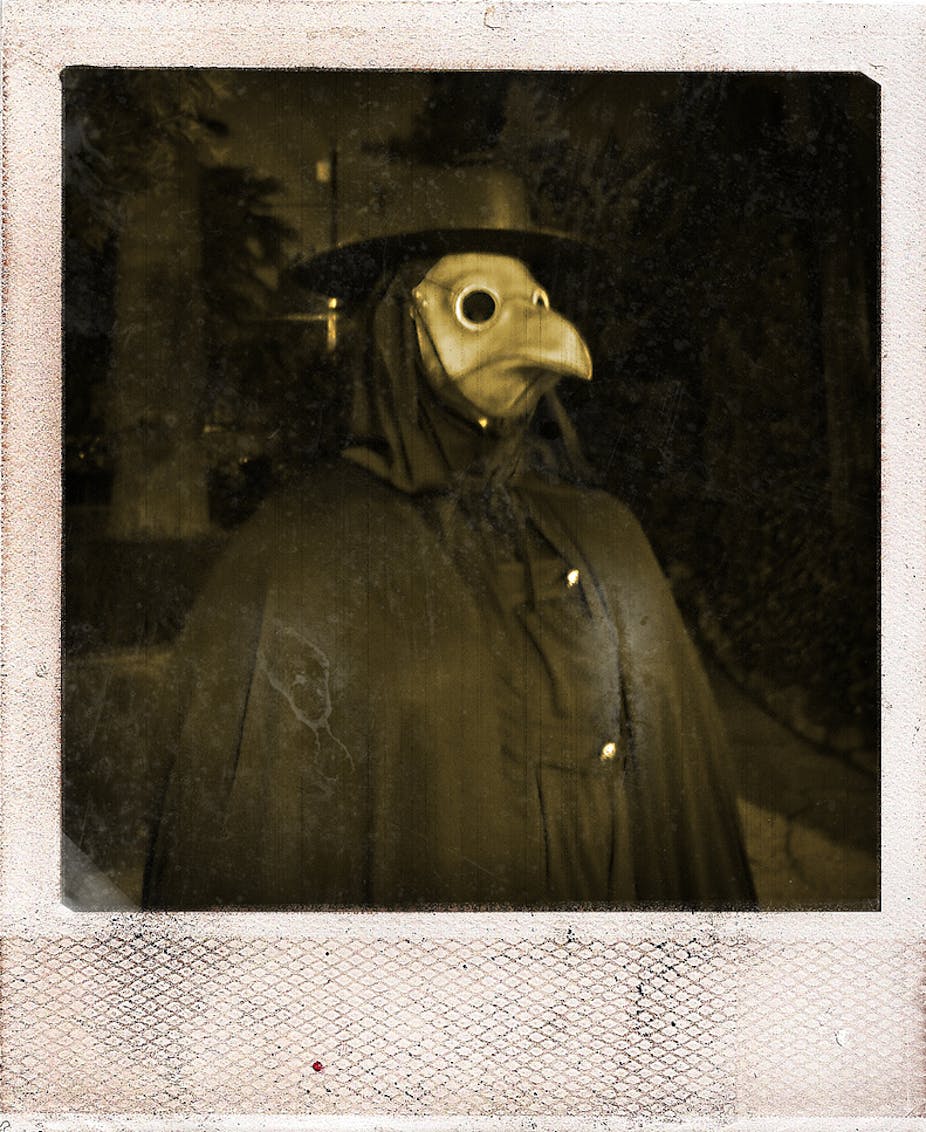Could contemporary plague outbreaks such as those that have hit Peru and the USA have their origins in the medieval era? It would seem so.
A paper published in Nature today reports a genome sequence taken from bacterial remains of the teeth of victims buried in London’s East Smithfield cemetery. The area was used in the 14th century to cope with the large number of dead bodies amassed during the first outbreak of the great plague, or Black Death.
It has long been thought – and now shown – that the plague was caused by the bacteria Yersinia pestis.
The work, by Kirsten Bos of McMaster University and an international group of scientists, has the potential to help us better understand contemporary outbreaks of plague across the world.
Repeat offender
Historically, the bubonic plague came in three waves.
The first was in the Mediterranean regions in 541 A.D. and is known as the Plague of Justinian. The wave of medieval plague, better known as the Black Death, hit Europe between 1348 and 1350, and is said to have claimed an estimated 30–50% of the European population.
After about 100 years this plague died out, but reappeared in China in the 1800s – this third wave is still responsible for 2,000 cases annually worldwide.

The Black Death was obviously terrifying, and the disease is now assumed to have been a particularly intense pandemic of bubonic and pneumonic plague caused by the bacterium Y. pestis. But this is still disputed.
Behind the waves
The study of bacteria only really began in the 1880s. For the medieval plague there were only the accounts of the time to go on, and no continuity of knowledge as the disease died out and reappeared in the 1800s in China.
It was by no means certain the same species was responsible for the three waves of plague.

Getting a genome – the DNA sequence of an entire organism – from the 660-year-old remnants of medieval plague is a great technical achievement as very little genetic material remains.
In this case, the DNA had been broken over the years into short fragments with an average length of 50 base pairs (the “spokes” that link the two strands of the DNA helix) in length. By contrast, the largest human chromosome is about 220 million base pairs long.
Nonetheless, Bos and her colleagues succeeded in extracting and purifying Yersinia DNA from the teeth by fishing out sequences that would hybridise (based on sequence similarity) to DNA from modern Y. pestis.
Four teeth from one individual were used, as these had the best yield of DNA.
A winning sequence
The sequence obtained is very interesting. First, it is very clearly derived from the species Y. pestis that causes much smaller outbreaks today. That ends any dispute about the medieval plague being due to Y. pestis.
But it tells us a lot more than this. The sequence is of good quality, so differences between medieval and modern can be observed.
The sequence totalled 4,367,867 base pairs in 2,221 contigs (a contig being a set of fragments that overlaps and can be joined into one sequence). In other words, there are 2,221 gaps in the genome sequence.
Modern genomes of Y. pestis have between 4.6 and 4.8 million base pairs, so about a tenth is missing. Some of the sequence is in short bits, so not much use for analysis. Nevertheless, this is still a remarkable outcome.
A strain game
The first thing we learn from comparing the medieval and modern plagues is that the older strain was very close to a direct ancestor of the modern plague organism.

This can be deduced because Y. pestis has a very close relative in Yersinia pseudotuberculosis, which causes disease in animals. It has been known for some time that Y. pestis is a relatively recent variant of Y. pseudotuberculosis, a species that causes a quite different and milder disease.
The sequences of the two species are very similar and, while Y. pseudotuberculosis is like most other species, including ourselves, in having quite significant sequence variation between individuals, Y. pestis has an extremely low level of variation.
And the Y. pestis sequence sits within the range of variation in Y. pseudotuberculosis. So clearly Y. pestis arose from within Y. pseudotuberculosis.
The differences between Y. psudotuberculosis and Y. pestis are known from genome sequences, giving a list of changes that must have occured in the evolution of Y.pestis.
This new medieval sequence sits only two mutations away from the direct line between Y. pseudotuberculosis to Y. pestis. All but two of the base changes seen in a comparison of the medieval London sequence and Y. pseudotuberculosis sequence are also found in modern Y. pestis.
It’s very rare to find a sequence that sits close to a lineage in this way.
Cause and effect
Personally, I’d have predicted there would be a number of mutations in a medieval London sequence that were not in the modern genomes, and that would tell us they had a common ancestor some years before 1348/1350.
As the authors point out, this impies the medieval plague was the main historical event that introduced human populations to the ancestor of all known pathogenic strains of Y. pestis.
It’s also interesting that there were just 97 mutations over the 660 yeasrs between this medieval London isolate and modern Y. pestis. That’s only one mutation every six years, giving us the first direct measure of how fast genome sequences change over the long term.
The fact an isolate from the first years of the Black Death represents the ancestor of modern plague suggests the Black Death of 1347–1351 was responsible for the introduction and widespread dissemination of the ancestor to all currently circulating Y. pestis strains pathogenic to humans.
In that sense, the Black Death isn’t ancient history: it has never gone away.

